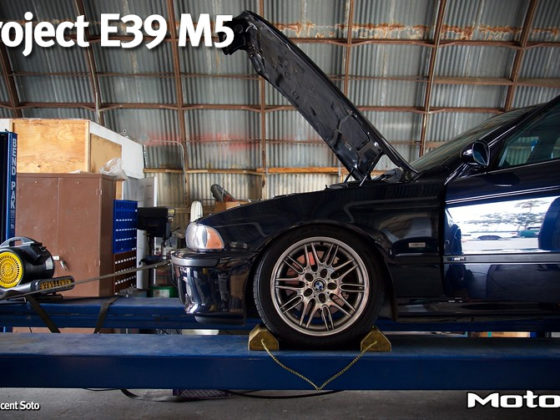,

Honda, has refused to comment on the engine regulations, likely because they have zero room to bitch right now.
This leads us into the fan reaction. Fans assumed new engine regulations would be a kitchen sink deal where the entire formula was scrapped and started over fresh. Fans are fixated on nostalgia and want the engines of days past (which blew up so regularly the Honda engine of today would actually be an improvement). And I agree, it would be awesome to have an engine formula again that emphasized all out power, technology, and the visceral, raw nature of motorsport. Surprisingly, we have two of those right now. Some of the technology being slipped into F1 engines today is mind blowing. Today’s engines use jet technology for fuel injection, providing the most optimal spray pattern to get the most homogenous fuel mixture possible. The engines that sit on the grid at this very moment make MORE power than their 1980s counterparts did, all while using very limited quantities of 100 octane gasoline. To put this into perspective in terms the regular MotoIQer will understand: Lewis Hamilton’s Mercedes W08 has about the same horsepower as Dai Yoshihara’s BRZ, all with 80% less displacement (8 Liters vs 1.6), 85% less fuel (~1,000 kg/hr vs 105 kg/hr), AND, these F1 engines have to last 5 full race weekends (and will have to last even longer in 2018 when the number of available engines drops from 4 to 3). Yes, you could build enough Fabulous Flog V8s to power a goddamn tanker ship for the cost of a single Mercedes PU106B, but the fact that Formula 1 is making Formula Drift horsepower in an engine this small and reliable, is truly amazing.
Yet fans HATE the current engines. Because, admittedly, they sound awful. F1’s biggest mistake has been limiting the fuel flow of the engines. While officially the FIA induced redline of the hybrid engines is 15,000 RPM, no engine on the grid is spinning that fast. Simply put, the fuel flow limitations force the teams to run lower peak RPM (as low as 11,000 in 2014, though likely higher now), which completely removes that erection inducing wail F1 fans remember from the previous naturally aspirated eras. Couple that with the natural muffling of the exhaust with the turbocharger and the MGU-H, and you get engines that sound growly, but muted. Raising the redline to 18,000 is a big help, but unless the fuel flow limitations are raised as well, this isn’t going to help.
On top of the F1 fans complaining, there was backlash from the NASCAR crowd when Sean Bratches of Liberty Media, responding to criticism of proposed standard parts in F1 to reduce costs said, “I’m not trying to be derogatory to NASCAR, but we don’t plan to be NASCAR…We don’t want to standardise the cars. We don’t want 20 identical cars going round the track, and the only difference is the driver.” Apparently this upset some NASCAR fans who think that just because Ford, Chevy, and Toyota are allowed to tweak their engines and bodies in very specific ways, the cars are unique, different, and open ended. While NASCAR fans got into a huff and tried to defend the “open” rulebook of NASCAR (by claiming Toyota’s dominance in 2017 is proof the cars aren’t spec. Which is wrong, it just proves that NASCAR’s system of checks and balances is broken), they missed on a much better argument. Formula 1’s rulebook IS very closed and the FIA is over protective of creativity in the name of cost savings. There used to be a day when Formula 1 would only ban advancements if they proved to be a safety risk. A great example of this is when airfoils were first introduced in the sport in 1968. They were perched on top of very long, very skinny tubes. Tubes which had a tendency to collapse at speed and cause nasty crashes. The FIA temporarily banned the wings in the middle of 1969, but allowed them in 1970 and beyond, only with restrictions on the size of the wings and their mounting. Simple, clear cut rules that allowed for lots of variation throughout the years. The wings were not banned because the FIA thought they would give Lotus (who was the first to introduce them) an advantage. The FIA did not ban wings because they thought costs would skyrocket as other teams figured out their own wings. They only banned them long enough to ensure they were safe, then let the teams have free reign.
Today, the FIA bans anything that might be a gray area, or whenever the teams skirt the rules. Namely, double diffusers, F-ducts, mass damper systems, FRIC suspensions, blown diffusers, flexing wings, and oil burning- all banned because the FIA didn’t think to cover those subjects in the rules and got upset when the teams found the loophole. Would the sport have been hurt had these developments been allowed to continue? I don’t think so. But, when creativity like this is quashed the moment it arises, you move closer and closer to a closed off system like NASCAR. In NASCAR, you do it exactly they way they want OR ELSE. NASCAR used to have some pretty open rules: just ask Smokey Yunick. Those days are long gone and with every innovation that gets squashed just as it’s getting interesting, Formula 1 is inching in that direction too. I’d much rather see F1 get smarter about how it guides teams and not just stomping out ideas like bugs- another column for another day.
As a compromise, I think the proposed engine regulations show a lot of promise. It's not perfect, but definitely an improvement, despite the bitching of the teams. It is probably smarter to wait until the final proposal is released before we get too worked up over these new regulations. Now, if Curly was the Formula 1 czar, we’d be something VERY different, but we will save that for a future column (which all ties into the way too strict rules system in place now). The good news is while fans and the current four engine suppliers haven’t been too enthusiastic about the new rules, there has been outside interest for the first time in years. More rumors of Volkswagen putting together a program (likely in the form of Porsche), and a repeated rumor of Aston Martin making a debut with Red Bull Racing are good signs for F1’s future.

Practice
Hamilton and Bottas were the class of the field throughout the practice, easily capturing the top two positions in all three sessions. Bottas did best his teammate in FP3, but in FP1 and 2, Hamilton was the top dog. It seemed that this would be an easy Mercedes 1-2 weekend, with Hamilton banging out another Brazilian win and starting his march towards Michael Schumacher’s record 91 F1 victories.
The only real pieces of noteworthy news came off the track. First, was as the teams left the track on Friday evening, a van of Williams team members, a van of Mercedes Benz team members, and a van of FIA officials were all held up at gunpoint just outside the grounds of the Interlagos circuit. The FIA and Williams vans were able to escape without issue, but the Mercedes van was stopped and the team members robbed at gunpoint. Lewis Hamilton expressed his disgust over the incident as the news broke the next day. This seems to be a part of the annual trip to Brazil and a part of the weekend the teams are sick of. Luckily nobody has been hurt in these incidents, but the fact that they happen in the first place is unacceptable. On Saturday, another group of robbers attempted to pull over the Sauber team van (clearly not the brightest thieves in the world since Sauber is perennially broke), and after the race on Sunday, a group of Pirelli engineers were accosted. This upset Pirelli so much that they ended up cancelling a Monday tire test. The security was so bad, there are rumors of future Brazilian GPs being cancelled in favor of a return to Argentina.
The other interesting tidbit from practice was a very public and vocal spat between Renault and Scuderia Toro Rosso. Both STRs were forced to replace the MGU-H before practice even began (resulting in grid spot penalties as both cars were on their 8th MGU-H), but both cars were knocked out FP1 due to MGU-H failures- Gasly’s being so severe that it required yet another MGU-H. When questioned about the situation, Renault boss, Cyril Abiteboul, mentioned that Renault had concerns over the installation of their engines into the STR chassis. His exact wording was, “There are never coincidences in this sport.” Renault did admit they were having trouble keeping up with the demand in new parts with the rash of failures in Mexico and the US and were making due with remanufactured parts. The accusation of installing the engines wrong did not sit well with STR, who released their own statement Saturday morning, hinting that Renault was deliberately sabotaging STR’s engines so Renault could beat STR to 6th in the championship points! After pointing out that the MGU-H should not be effected by the installation of the engine, they added “We mustn't forget that they are fighting with Toro Rosso for a better position in the Constructors' championship. As suggested by Mr. Abiteboul, the situation may not be a coincidence, but it is certainly not due to STR's car.” These few words upset Abiteboul so much he was seen cornering Dr. Helmut Marko of the Red Bull organization and shouting at him in the garage area! Dr. Marko quickly issued a statement apologizing to Renault and mentioning how invaluable Renault were to Red Bull Racing’s string of four consecutive championships. It is quite a day in F1 when Dr. Marko, the man usually most verbal about Renault’s engine problems, is forced to make peace with Renault. While STR will be moving to Honda in 2018, Red Bull still needs a happy Renault if they intend on staying competitive in 2018! Or, if they have any hope of retaining Renault beyond 2018 (remembering that Renault has stated they do not intend to renew their engine contract with Red Bull when it expires in a year’s time).



